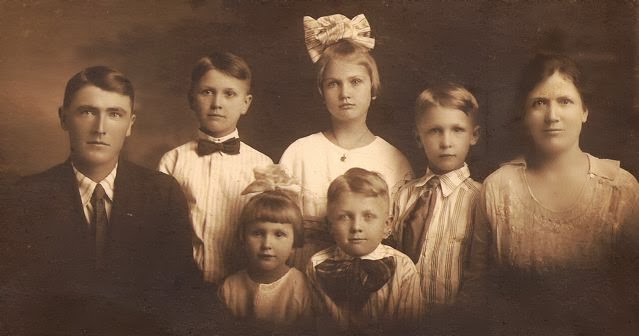On Friday, December 15, four days after the fire that
killed 23-year-old Geneva Orr Lammers and her children—Laura Mae, age 3; Melba
Jean, age 2; LaVerne Francis, age 11 months, and an unborn baby—newspapers were
still pondering the mystery surrounding the cause of the fire. Parts of the
bodies had been sent to Washington, D. C. for analysis in FBI labs. No arrests
nor warrants had been issued.[1]
Nonetheless, Sheriff Carter and his officers thought they
knew who did it, but they wanted a confession. They insisted Lammers take them
on the route he had traveled when he left Troy the previous Monday morning
supposedly in search of work. He first took them to Independence, Missouri,
then to Kansas City where he tried to provide an alibi by showing a receipt for
gasoline purchased on December 12, but the actual date, December 13, was
smudged and over it was written the number 12. Then he took them to Topeka,
Kansas, where he had spent the night in a hotel and mailed a post card home to
Geneva.[2]
“Dec.
14, 1950
Dear
Gen:
I
made it do(wn) here O.K. . . . I didn’t get my work. I am goting to Topeka see
if I can get
work there. I’e seeing you sune.
I
am goting now to Topeka.
Yours,
Jim.”
Addressed to “Miss James Lammers, Tory, Kansas,” this card
had arrived in Troy on Friday, December 15, 1950.[3]
Spelling errors belong to Lammers.
He said he had overheard people in Topeka talking about a
terrible trailer fire in Troy, so he hurried home. The group returned to Troy
late Friday, and at 12:30 a.m. Saturday, the sheriff woke Lammers to announce
that he was serving a first degree murder warrant on him.[4]
“Does it have to be as bad as that?” Lammers said.[5]
 |
| Photo of James and Geneva Lammers found in ruins of trailer. |
After his confession, Lammers was moved to an undisclosed
location for his safety.[7] Anger in
the community must have been raging.
A few days later, The
Hiawatha Daily World reported that Lammers had changed his story. He
claimed to have choked his wife to death and poured kerosene on her body before
setting the fire. This new confession contradicted the coroner’s report that
all the victims had died of carbon monoxide poisoning.[8]
It also changed the charges against him to two counts of murder: one for
killing his wife by choking and the other for killing his children by fire.
Meanwhile, Geneva's brother, James Orr, sadly took the
responsibility of accompanying the bodies of his sister and her children home
to Hartington, Nebraska, where their heartbroken mother, my dad's Aunt Mandy, waited. They
were buried together in a single
grave at St. John the Baptist Cemetery, Fordyce, Cedar County, Nebraska.
What possible reason could James Lammers have had for such
a terrible deed? He claimed that his children drove him crazy, and he was
dreading the arrival of a 4th child.[9]
He had taken his wife to St. Joseph, Missouri to a doctor where they thought
she could get an abortion, but the doctor had refused.[10] Yet another motive would surface during his trial.
[1] “Husband
Returned to the Fire’s Scene As Probe Goes On,” The Hiawatha [Kansas] Daily World, 15 December 1950, p. 1, col. 3.
[2] “Lammers
Confesses!” The Hiawatha [Kansas] Daily
World, 16 December 1950, p. 1, col. 3. “Confesses to Trailer House Murder,”
The [Troy] Kansas Chief, 21 December
1950, p. 1, col. 1-3. Note: The Chief was
a weekly, so its story was a summary of the week’s findings.
[3] “Confesses
to Trailer House Murder.”
[4] Ibid. “Troy
Killer Shows No Regret Over a Slaughter of Five,” The Hiawatha [Kansas] Daily World, 18 December 1950, p. 1, col. 2.
[5] “Troy Killer
Shows No Regret Over a Slaughter of Five.”
[6] Ibid.
[7] “Lammers
Confesses!” “Confesses to Trailer House Murder.” “Troy Killer Shows No Regret.”
[8] “Lammers
Makes a New Confession In Troy Murder Case,” The Hiawatha [Kansas] Daily World, 28 December 1950, p. 1, col. 3.
[9] Raymond
Harley, “Flames For Four,” Real Detective,
April 1951, p. 31.
[10] “Confesses
to Trailer House Murder.”






